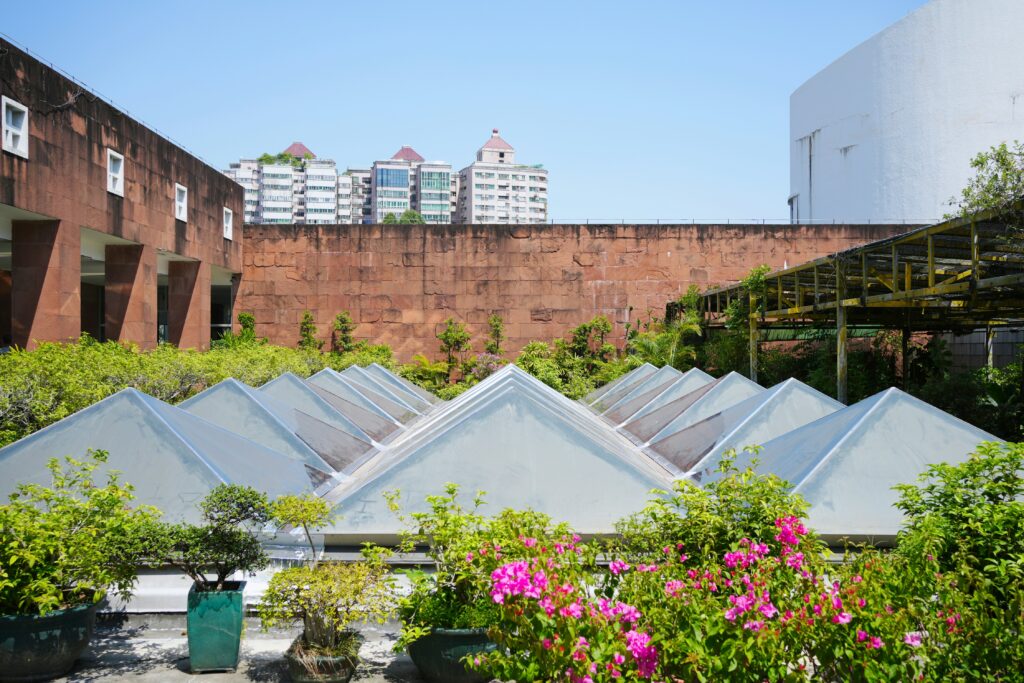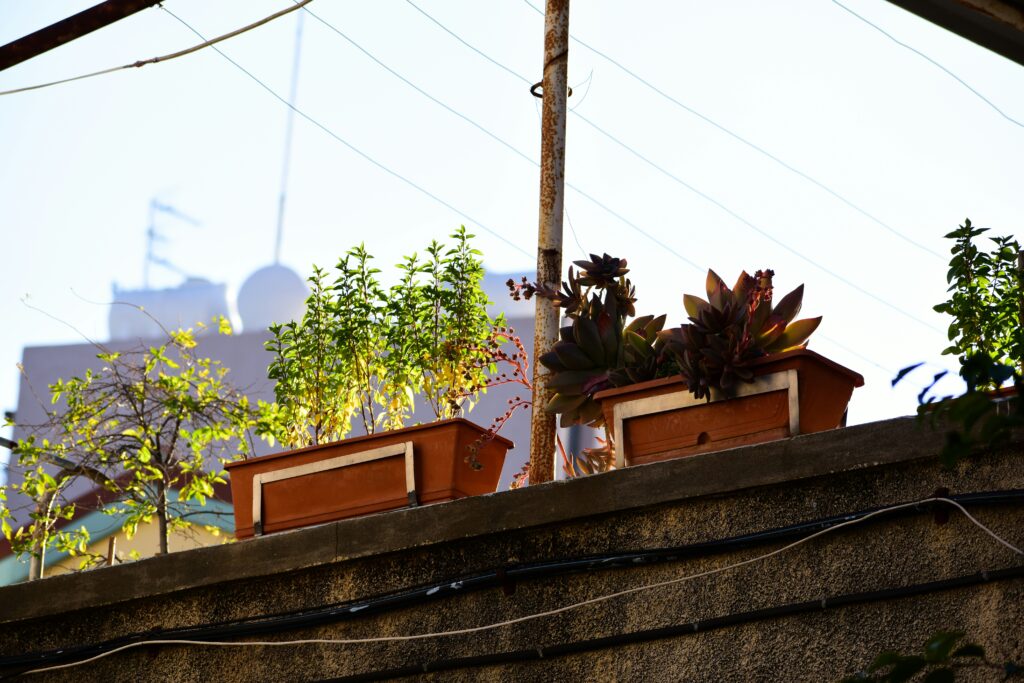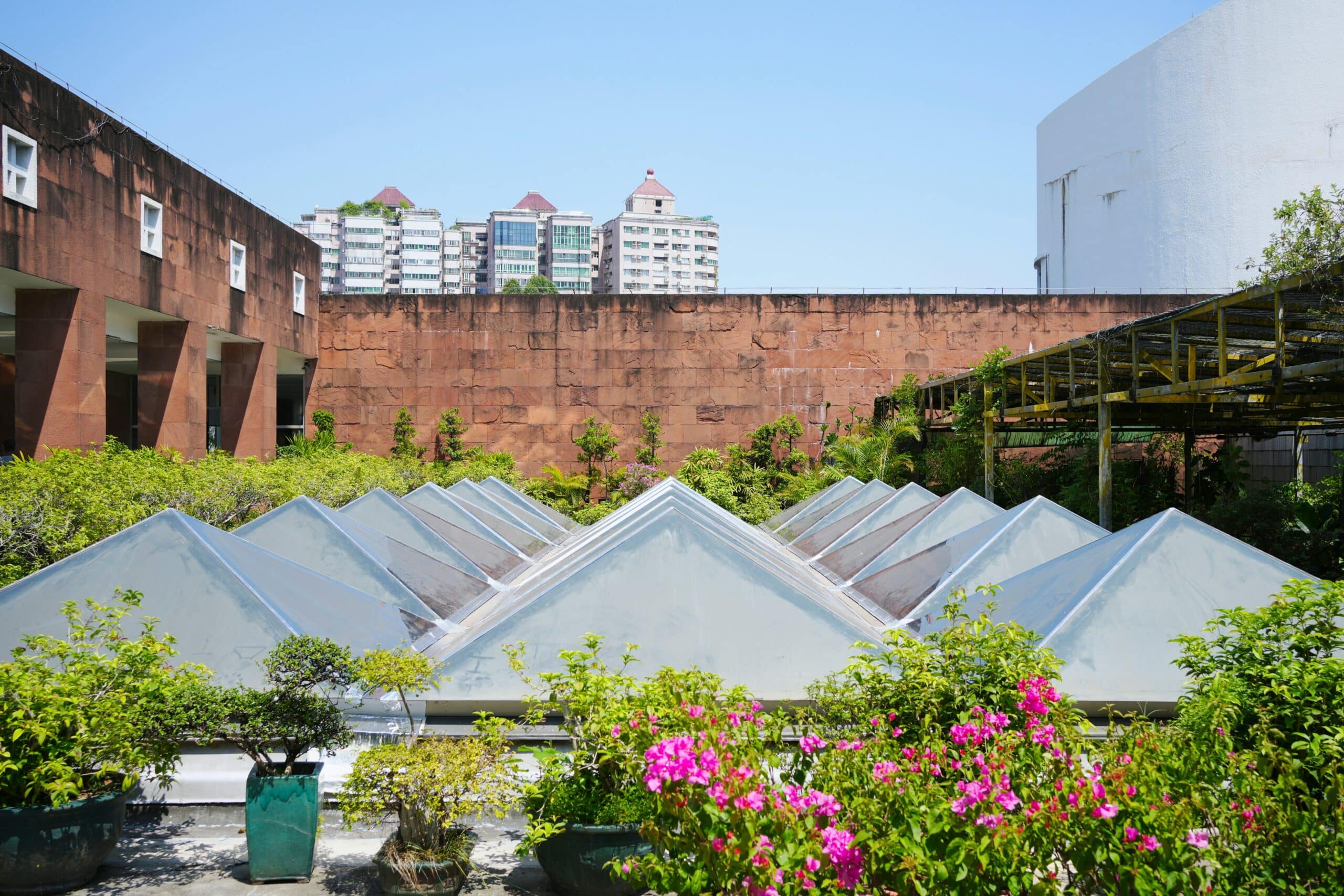Anúncios
Lightweight containers can be a game-changer for urban gardening enthusiasts who want to make a significant impact. In this post, we’ll uncover the secrets to an efficient rooftop garden setup with lightweight containers.

Imagine a thriving garden oasis amidst a concrete jungle, where your favorite plants not only beautify your space but also provide a soothing retreat. From choosing the right containers, selecting the perfect plants, to the critical care practices, we’ll delve deep into the nitty-gritty of rooftop gardening.
Anúncios
With the right approach, lightweight containers can transform your rooftop garden from a mediocre setting to a stunning spectacle. So, buckle up, as we take you on a green journey of transforming your rooftop garden into a horticultural haven with lightweight containers. This could be a game-changer for your urban gardening journey, providing maximum impact and minimum stress. 🌿🌼🏙️
Understanding Lightweight Containers
When it comes to rooftop gardening, one of the fundamental factors to consider is the weight of the containers you’ll use for your plants. Using lightweight containers can help alleviate the stress on your roof structure, preventing potential damages that could come with heavier pots.
Anúncios
Lightweight containers are typically made from materials such as plastic, fiberglass, or foam. They are engineered for durability and strength, yet significantly lighter than traditional terracotta or ceramic pots. Moreover, these containers often feature modern and versatile designs, making them an excellent choice not only for their practicality but also for their aesthetic appeal.
Benefits of Lightweight Containers
The advantages of incorporating lightweight containers into your rooftop garden setup are both practical and substantial, offering improvements in mobility, safety, plant health, and design flexibility. When gardening in elevated or weight-sensitive environments such as rooftops, these containers can make a significant difference in both the usability and longevity of your garden space.
1. Enhanced Ease of Handling and Maneuverability
One of the most immediate and noticeable benefits of lightweight containers is their ease of handling. Compared to traditional terracotta, ceramic, or concrete pots, lightweight options such as plastic, fiberglass, resin, or foam composite planters can be effortlessly lifted, carried, and placed without the need for assistance or heavy-duty equipment. This makes the initial setup of your garden much smoother, especially if your rooftop has limited access or stair-only entry.
Additionally, their portability allows for more convenient seasonal adjustments. For instance, you can easily move sun-sensitive plants into the shade during the summer, or relocate containers to sheltered areas during storms or frost conditions. This mobility also makes routine maintenance tasks like cleaning, rearranging, or inspecting for pests significantly less physically demanding.
2. Improved Structural Safety
Another critical benefit of lightweight containers is the reduction in overall weight placed on your rooftop. Roofs—especially those not specifically engineered for high loads—can only bear a certain amount of pressure before potential damage occurs. By using lightweight planters, you reduce the static load, lowering the risk of cracks, leaks, or long-term wear on your roof’s surface and support structures. This is especially important in older buildings or urban environments where structural capacity is a concern.
Some local building codes even place restrictions on rooftop garden weight limits, and using lightweight containers can help ensure that you remain compliant with safety guidelines and avoid costly repairs or legal issues.
3. Better Drainage and Root Health
Lightweight containers often feature modern, well-designed drainage systems, including multiple bottom holes, inner ridges to elevate the soil line, and even self-watering reservoirs in some models. These features can help prevent water from accumulating at the bottom of the pot, reducing the likelihood of issues such as root rot, fungal infections, and mold growth.
Moreover, improved aeration encourages stronger and healthier root development, which translates into more vigorous plant growth and higher resistance to environmental stressors like wind or drought. In rooftop conditions—where pots are more exposed and tend to dry out faster—this efficient water management is especially valuable.
4. Increased Design Versatility and Layout Flexibility
Another major advantage of lightweight containers is their flexibility in garden layout and aesthetic design. Because they’re easier to move and reposition, gardeners have the freedom to experiment with different arrangements, color schemes, and thematic designs throughout the seasons. Whether you want to create a symmetrical layout with matching containers, a dynamic boho-chic setup with various heights and shapes, or a minimalist Zen garden, lightweight planters make it easier to adapt your space without hassle.
This flexibility also allows you to respond to changing environmental conditions. For example, if certain areas of your rooftop receive more sunlight or are windier during specific times of the year, you can rearrange your containers accordingly to optimize growing conditions. In small or oddly shaped rooftops, this ability to reconfigure your garden layout can be the key to maximizing both aesthetics and functionality.
Selecting the Right Lightweight Containers
Not all lightweight containers are created equal, and making the right choice is crucial when designing a functional and safe rooftop garden. Since your containers will be placed on a surface that may not have been engineered to support excessive weight, careful planning is essential to avoid structural strain or potential damage over time.
One of the first factors to take into account is the size of the container. While lightweight containers are generally easier to move and place, larger pots—even those made of light materials—can become surprisingly heavy once filled with potting mix, water, and mature plants. As a rule of thumb, it is advisable to select containers that do not exceed two feet (approximately 60 cm) in diameter or height, unless you’ve consulted with a structural engineer or your building management to confirm your rooftop can handle the load.
Next, consider the material composition of the containers. Plastic pots are often the most economical and lightweight option available. However, over time, they may become brittle, discolored, or cracked, especially when exposed to intense sun, freezing temperatures, or sudden temperature changes. For improved durability and long-term resilience, fiberglass and resin containers offer a great balance between lightness and strength. They are usually UV-resistant, weatherproof, and available in a wide range of textures and colors that mimic more traditional materials like clay or stone.
Another excellent option is foam composite planters, which are insulating, impact-resistant, and extremely lightweight, making them ideal for rooftops with strict weight limitations. Wooden containers, although heavier, can be used sparingly for visual contrast or in corners that offer greater load-bearing capacity. To reduce weight, ensure they are lined with a moisture barrier and filled with a lightweight soil mix.
Also consider the shape of the containers—tapered bases tend to weigh less and require less soil than deep, cylindrical pots. Adding casters or plant dollies beneath larger containers can further improve mobility, making seasonal rearrangements or cleaning more manageable.
Choosing the Right Plants
When curating the plant palette for your rooftop garden, it’s important to consider not only visual appeal and climate suitability but also the weight contribution of the plants and their growing medium. Some plants, especially those with deep or aggressive root systems, require large volumes of soil, which adds to the overall weight burden. For a lighter, more manageable setup, select plants with shallow or compact root structures that can thrive in smaller containers.
Additionally, prioritize drought-tolerant and wind-resistant varieties, as rooftop environments tend to be more exposed to the elements compared to ground-level gardens. It’s also a good idea to choose plants that don’t require constant watering, as this reduces the frequency of adding water weight to the system.
Here are some excellent examples of suitable plants for lightweight container gardening on rooftops:
- Herbs such as basil, parsley, thyme, oregano, mint, and chives. These not only thrive in shallow soil but also offer aromatic, culinary, and decorative value.
- Succulents and cacti, like sedum, echeveria, aloe vera, and opuntia. These plants are remarkably hardy, require minimal watering, and adapt well to intense sun and dry conditions.
- Annual flowering plants such as petunias, marigolds, pansies, and nasturtiums are vibrant, easy to maintain, and grow well in smaller containers.
- Small ornamental grasses, like blue fescue or carex, can add movement and texture without adding bulk.
- Compact perennials and dwarf shrubs, such as lavender, dwarf boxwood, or heuchera, provide structure and greenery year-round, especially when arranged as anchors or borders.
Keep in mind that mixing plant types with varying textures, bloom times, and foliage colors can lead to a more dynamic and visually interesting composition. Be strategic with placement—grouping sun-lovers in open areas and shade-tolerant species near taller plants or shaded corners.
Lastly, always match your plant choices with the microclimate of your rooftop. Monitor factors like wind exposure, direct sunlight hours, and rain patterns, and adjust your selection accordingly. The right plant choices not only improve aesthetics and ease of care but also contribute to a lighter, safer, and more sustainable rooftop garden.
Arranging Your Rooftop Garden
Once you have carefully selected your containers and chosen the appropriate plants based on your climate, light conditions, and personal preferences, the next essential step is thoughtfully arranging them on your rooftop space to achieve the greatest possible visual impact and functional harmony. This is your opportunity to transform a bare rooftop into a lush, vibrant oasis high above the city or your home.
To accomplish this, you can apply foundational principles of traditional and contemporary garden design, including concepts such as color harmony, textural contrast, plant height variations, symmetry, and balance. Consider incorporating focal points such as a tall ornamental grass, a dwarf tree, or a striking sculptural planter to anchor your arrangement. Grouping plants in odd numbers—like threes or fives—can also help achieve a more natural and aesthetically pleasing layout.
For example, it’s wise to group plants with similar watering and sunlight requirements together. This not only simplifies your gardening routine and ensures healthier plant growth, but also minimizes the risk of over- or under-watering certain species. Another effective design strategy is to play with vertical space—by using plant stands, tiered shelves, or hanging baskets—to create multiple layers of foliage and bloom. This technique enhances the sense of depth and dimension in your garden, making even small rooftop spaces feel lush and expansive.
You could also consider orienting taller plants toward the back or center, depending on whether the garden is viewed from one side or all around, and placing shorter or trailing varieties toward the front or edges. This helps maintain clear sightlines and avoids obstructing views, while giving the arrangement a deliberate and structured appearance.
Planting and Maintenance Tips
When it comes to planting, one of the most important considerations is choosing the right growing medium. Always opt for a high-quality, lightweight, and well-draining potting mix, which is specifically formulated for container gardening. Avoid using standard garden soil, as it tends to be too heavy, compacts over time, and often lacks the necessary drainage capacity, leading to water retention and potential root rot.
Equally important is ensuring that every container or planter has adequate drainage holes at the bottom to allow excess water to escape freely. You may even want to add a layer of small pebbles or broken pottery at the base of the pot to further improve drainage efficiency and airflow around the roots.
Regular maintenance is absolutely critical in a rooftop garden, as plants in containers are more susceptible to stress due to wind, heat, and fluctuating temperatures. Establish a consistent schedule for watering, fertilizing, deadheading spent blooms, and pruning overgrown or leggy growth. It’s also vital to inspect your plants frequently for any signs of pests, diseases, or nutrient deficiencies—such as yellowing leaves, spots, or stunted growth—and address these issues as soon as they arise to prevent them from spreading.
Additionally, consider rotating plants periodically to ensure even exposure to sunlight, especially if part of your rooftop is shaded during certain times of the day. During extreme weather conditions, such as intense summer heat or heavy rainfall, take precautionary steps like moving sensitive plants to sheltered areas, using shade cloths, or temporarily elevating pots to avoid waterlogging.
By thoughtfully arranging your rooftop garden and maintaining it with care and consistency, you can create a thriving, serene environment that offers beauty, relaxation, and a connection to nature in the heart of an urban or elevated setting.

Conclusion
In summary, lightweight containers can significantly elevate your rooftop garden game. They offer practical benefits, like easy handling and better safety, and open up new possibilities in garden design. By carefully selecting your containers and plants, and arranging them thoughtfully, you can create a rooftop garden that is not only productive but also visually stunning. Remember, the key to successful rooftop gardening lies in the careful management of weight, so choose your containers wisely!
In conclusion, transforming your rooftop into an enchanting garden is an excellent way to utilize unused space and add a refreshing touch to your home. The ‘Grow Up: Elevate Your Rooftop Garden Game with Lightweight Containers for Maximum Impact!’ guide provides invaluable insights on the same. It emphasizes the importance of lightweight containers for rooftop gardening, which are not only easy to handle but also ensures the safety of your building structure. These containers are ideal for growing a variety of plants, from lush greens to exotic flowers, transforming your rooftop into a stunning green oasis. Remember, using high-quality soil and regular watering are key elements for a thriving rooftop garden. Choosing suitable plants that can withstand varying weather conditions is crucial. With the right container choices, suitable plants, and regular maintenance, your rooftop garden can offer an excellent retreat spot, a place to grow your own food, or simply add beauty to your home. It’s time to elevate your gardening game with lightweight containers for a rooftop garden that leaves a lasting impact. Embrace the benefits of rooftop gardening, and bring nature closer to your urban dwelling. 🌿🌸🌻🏡

